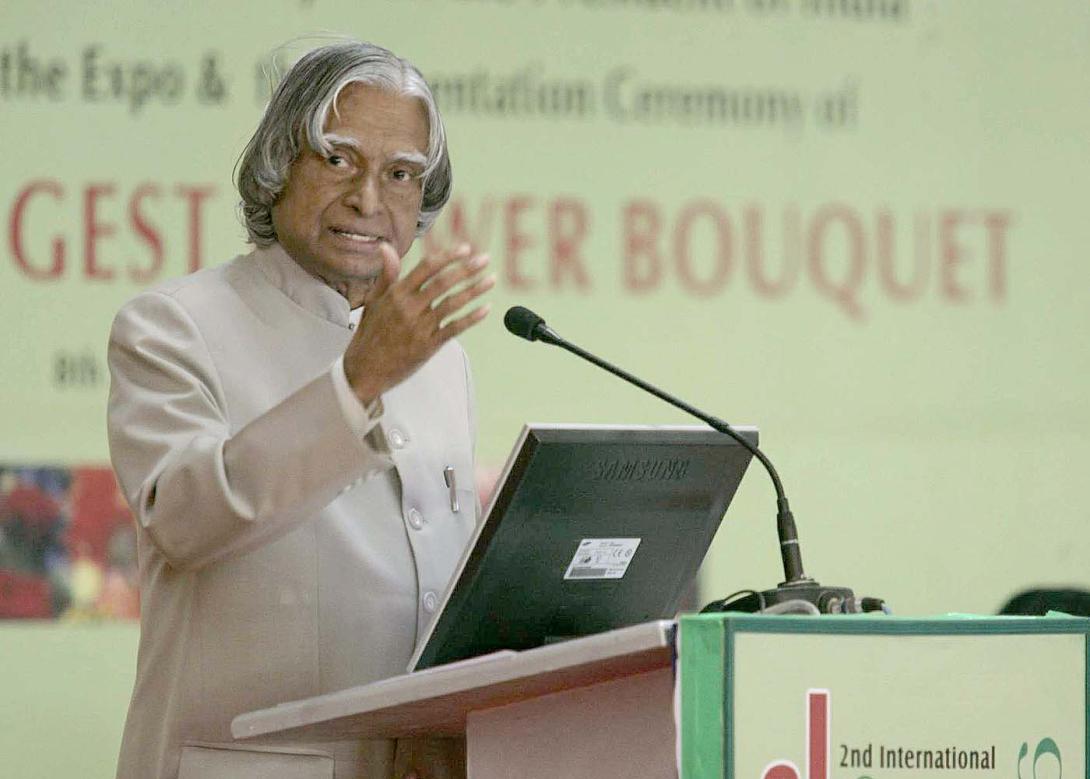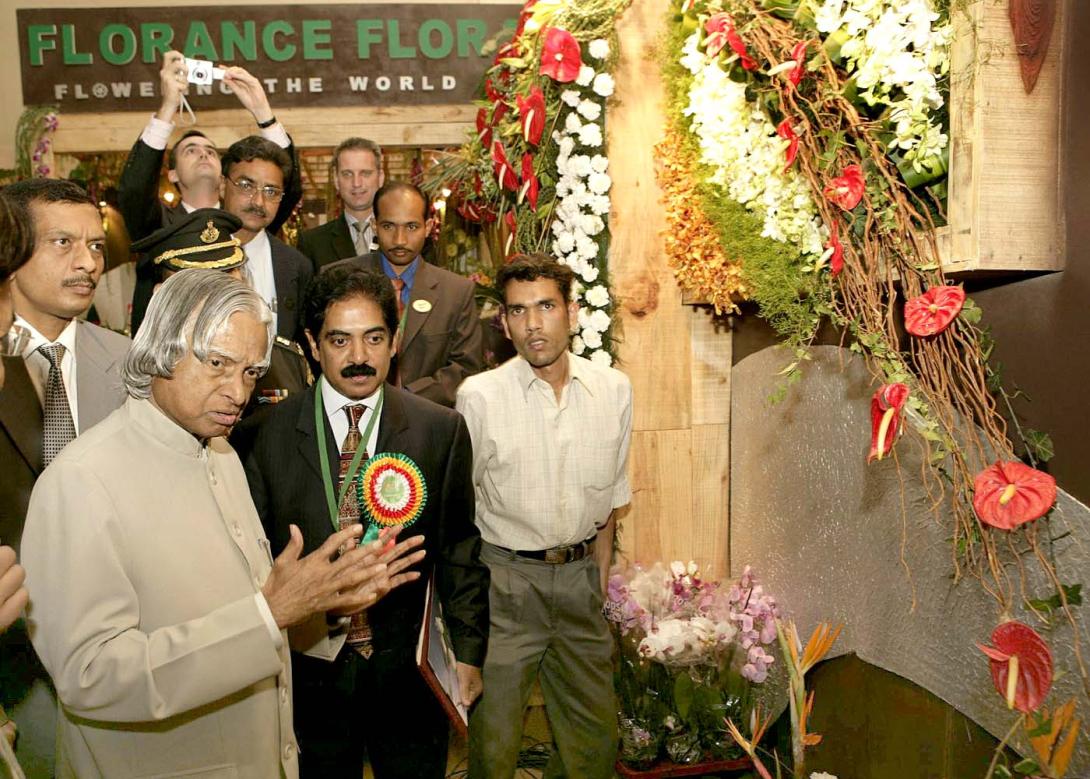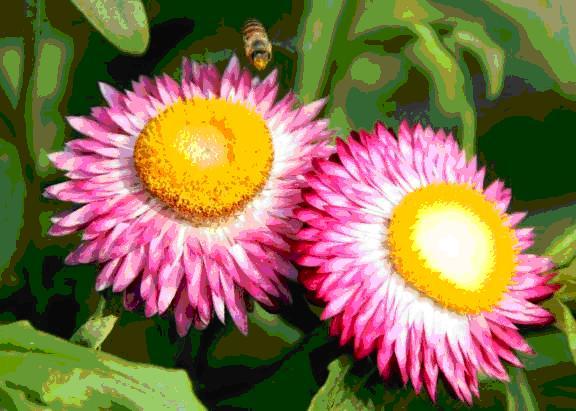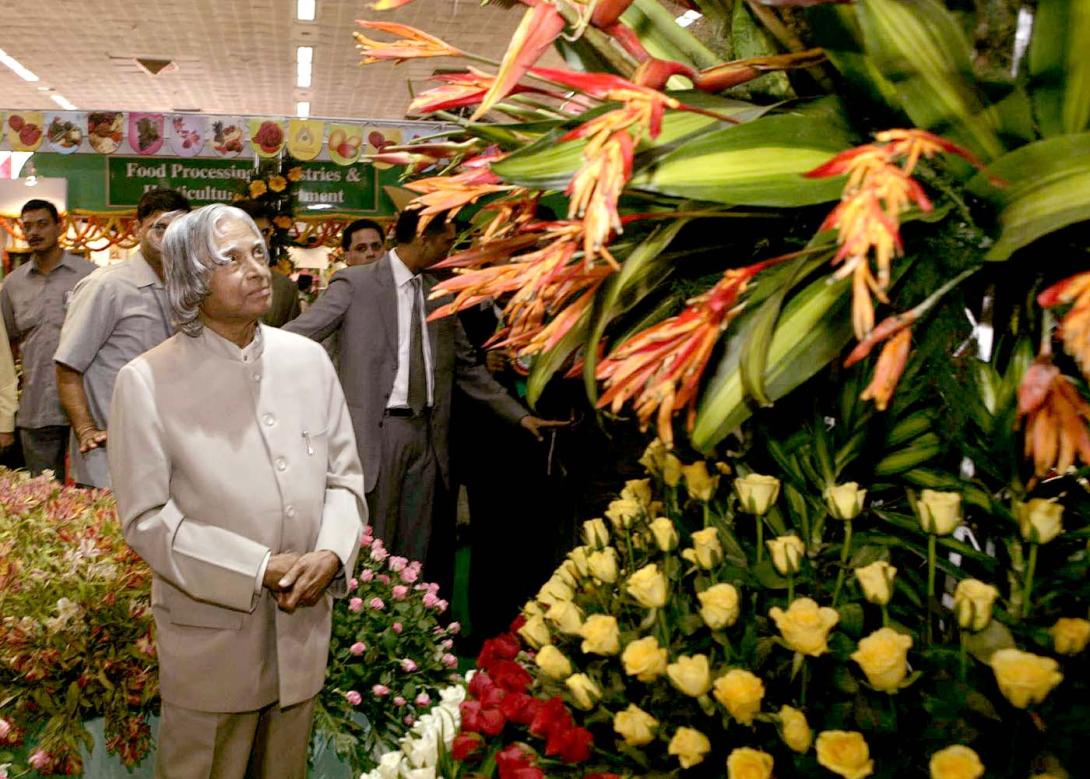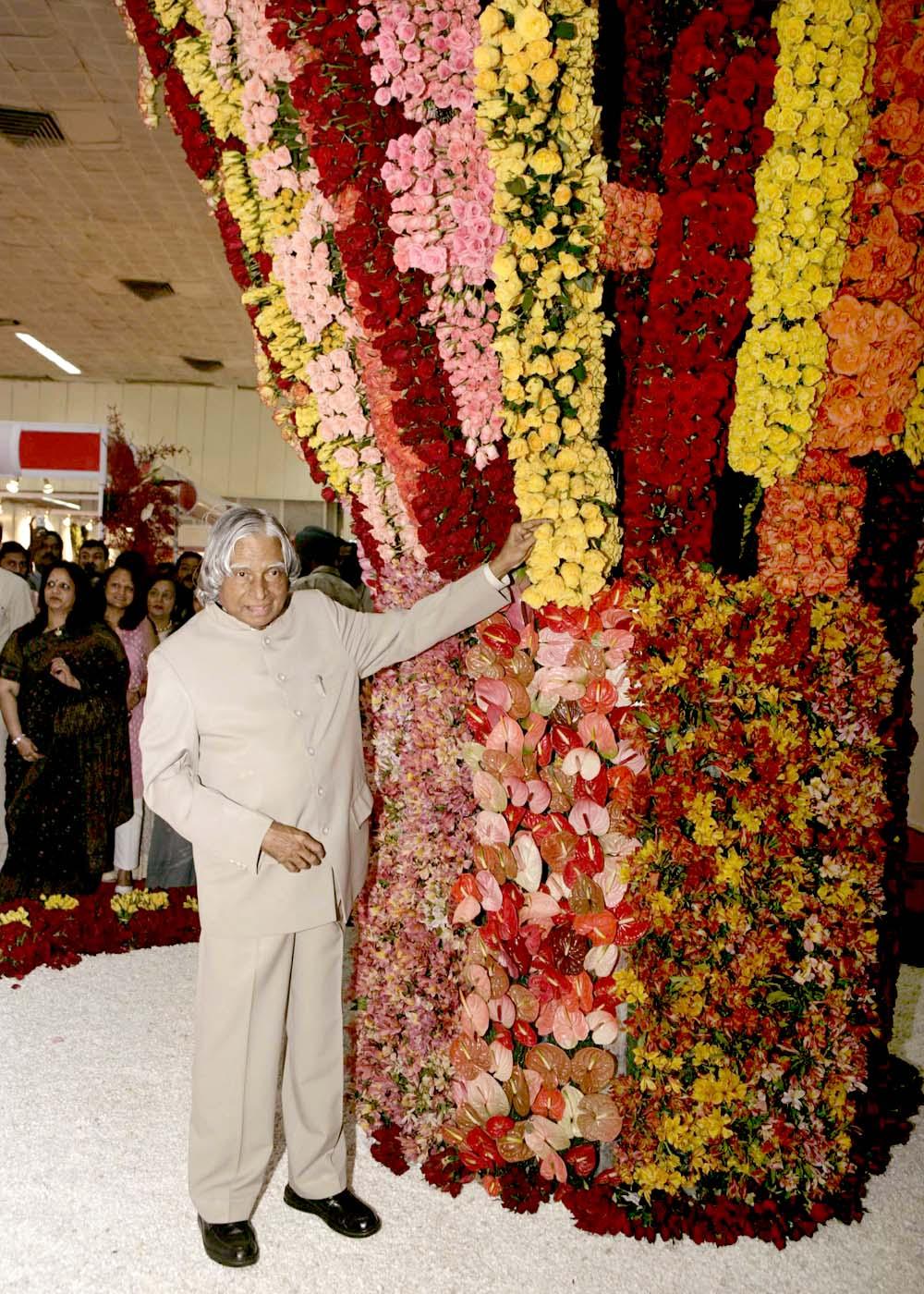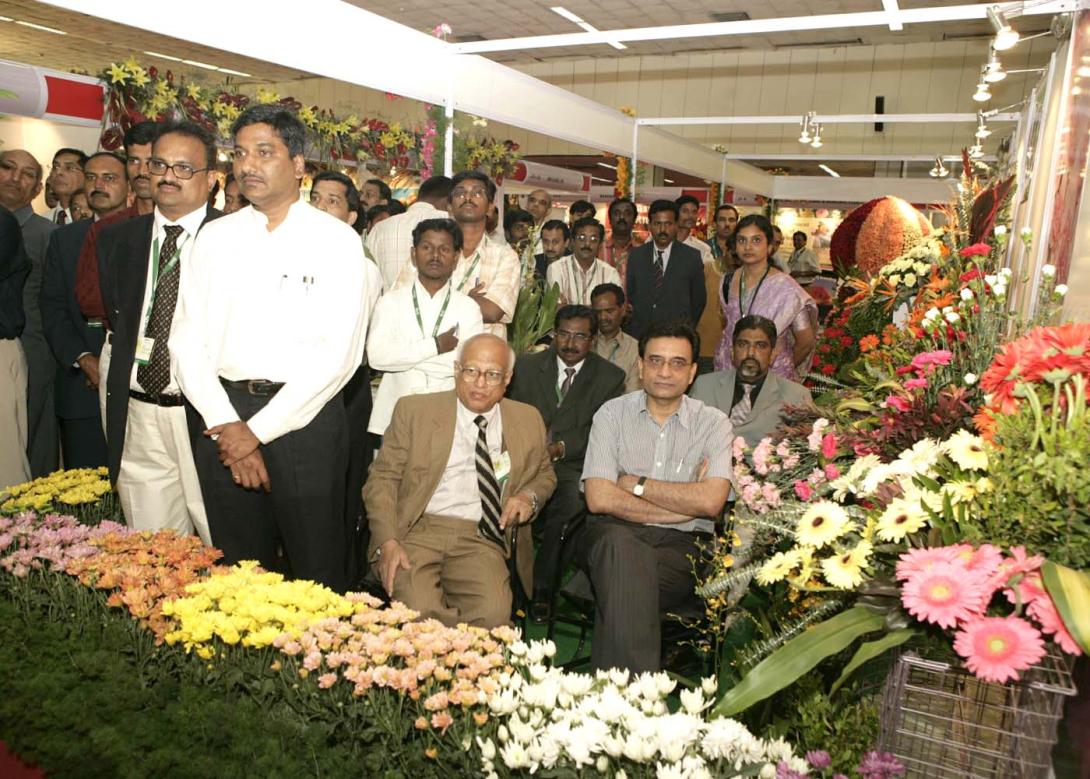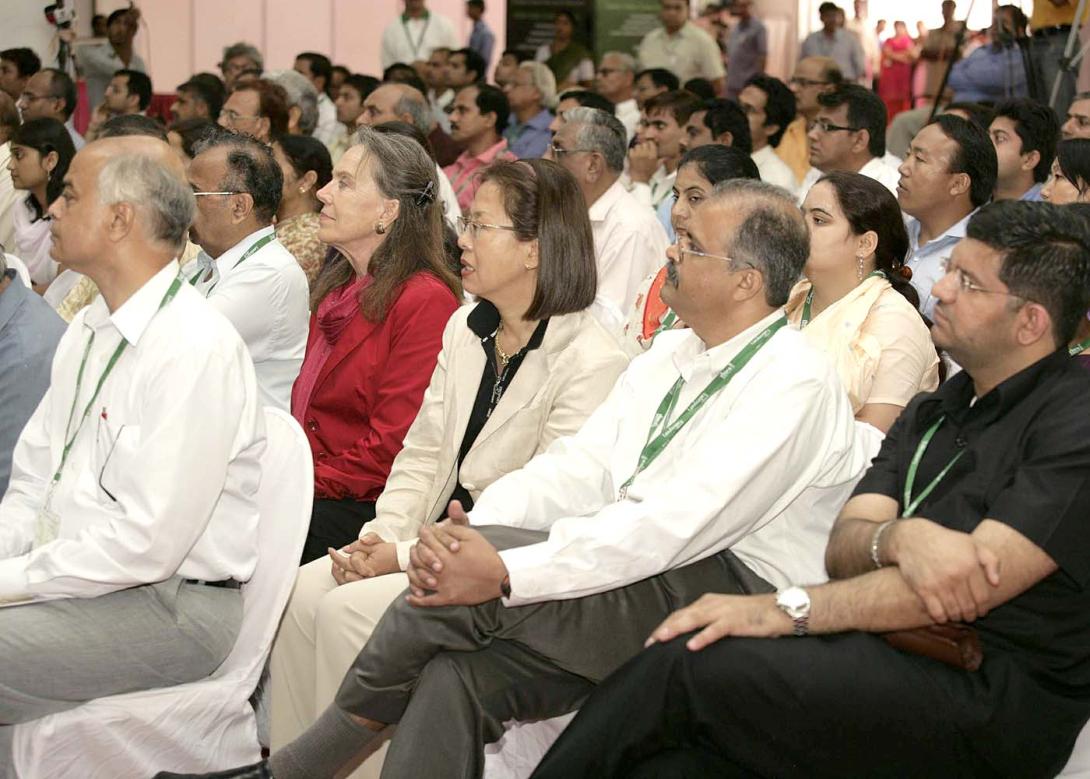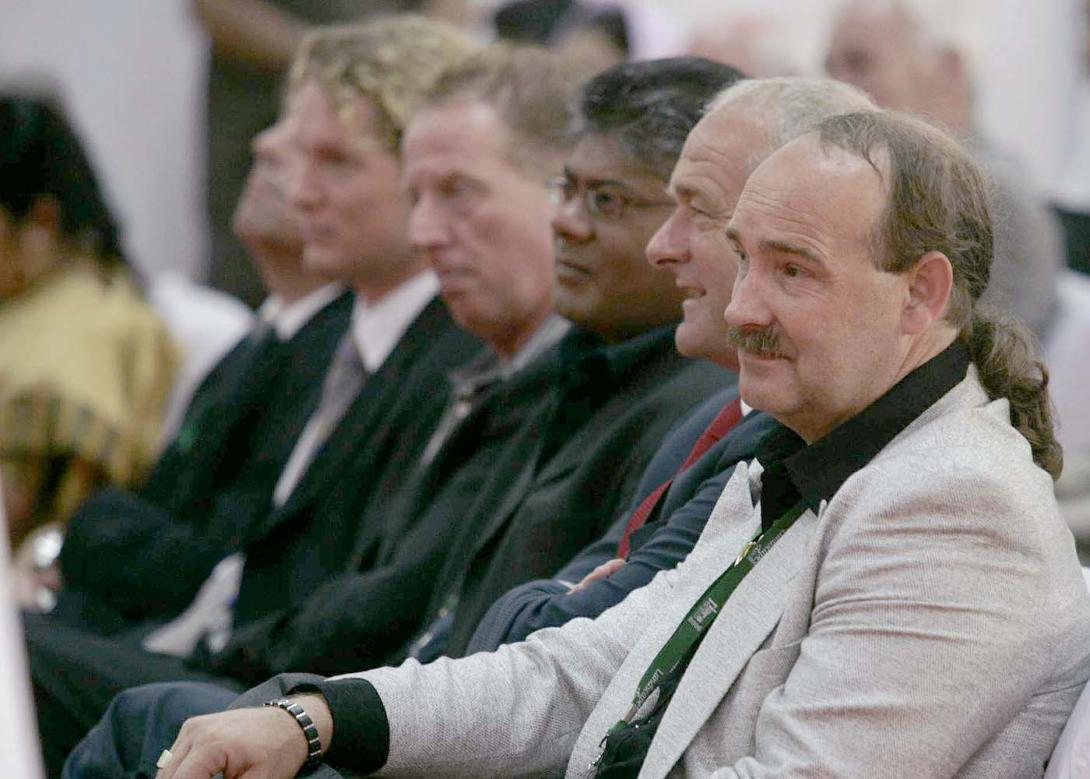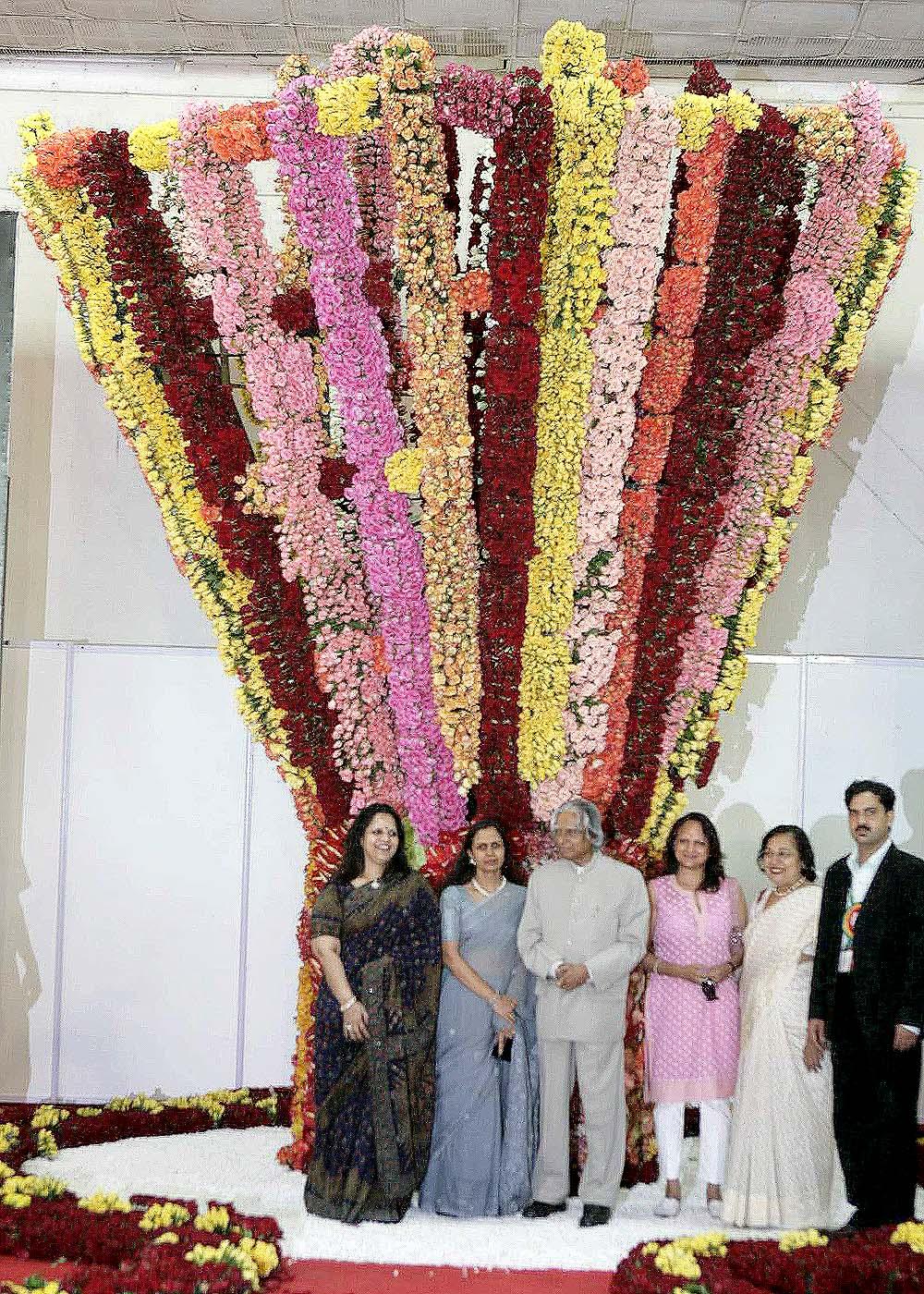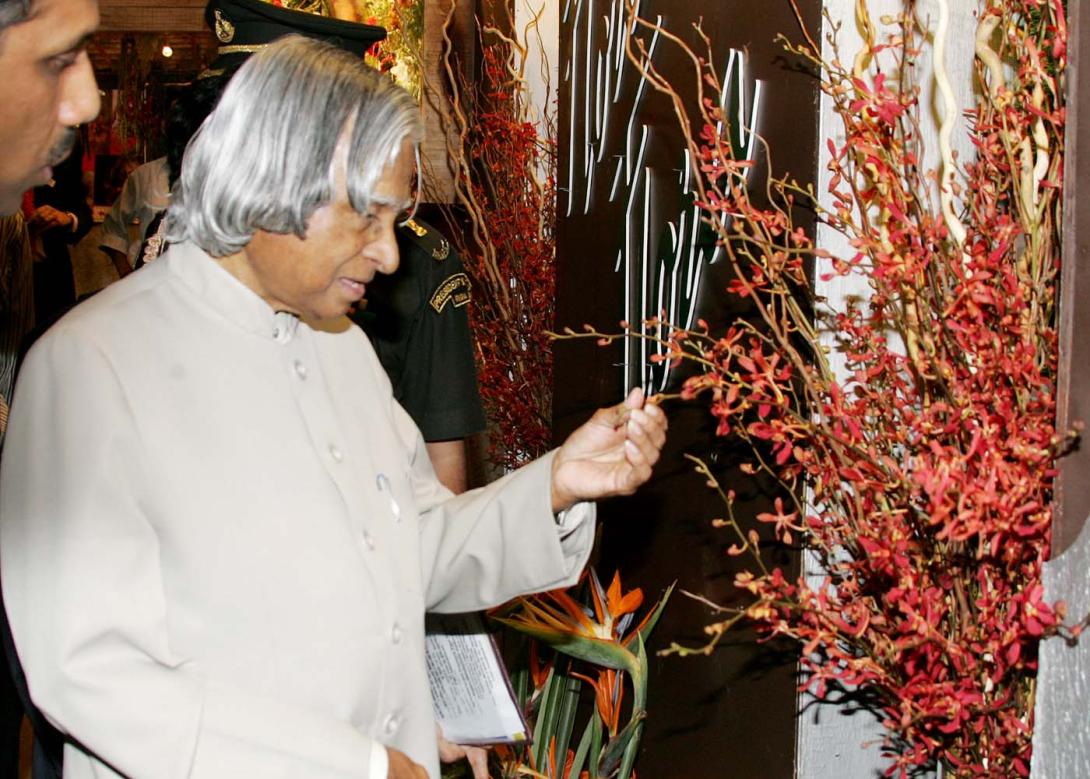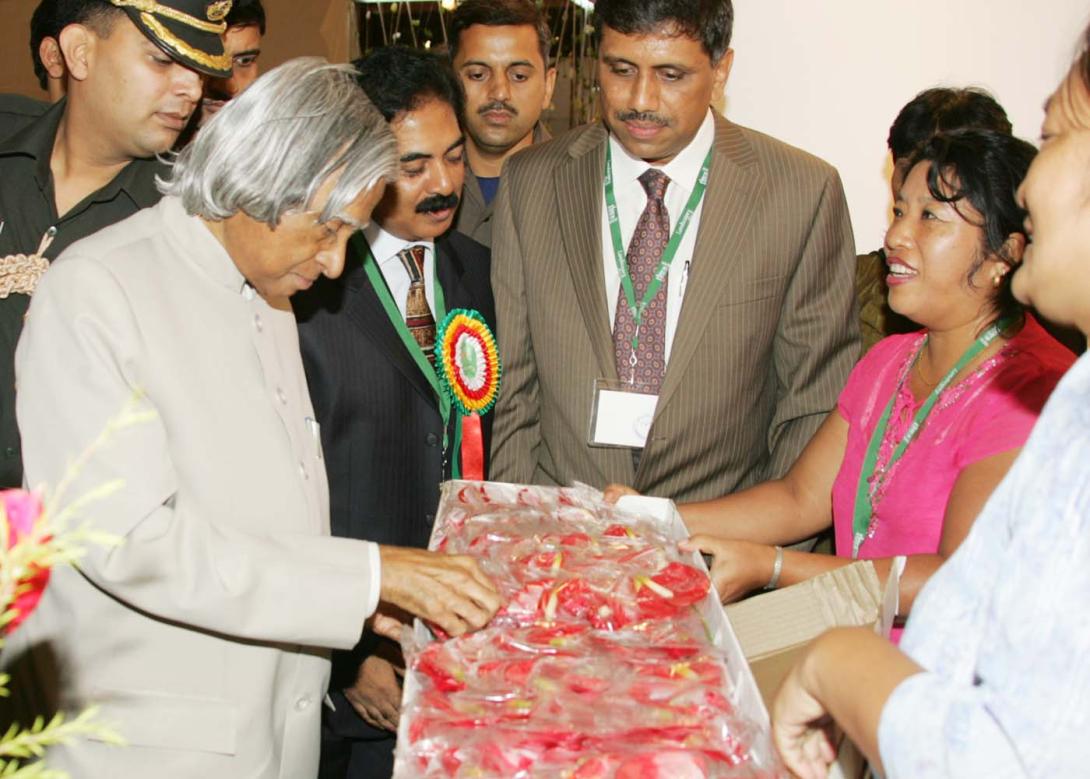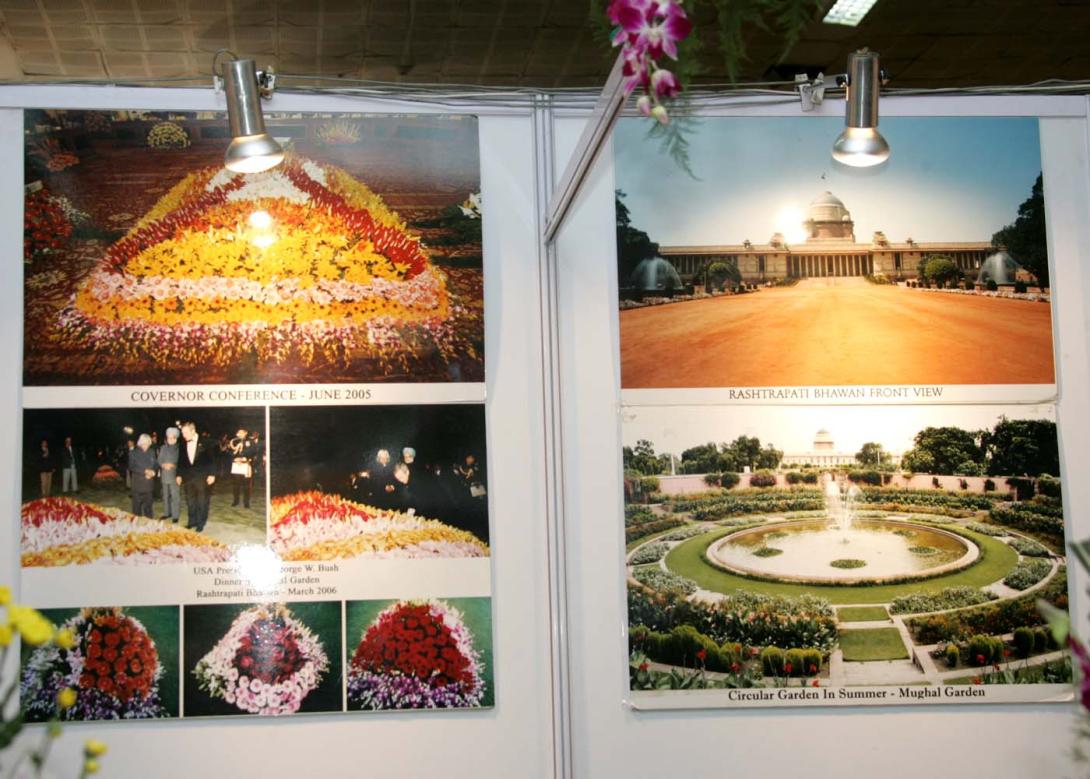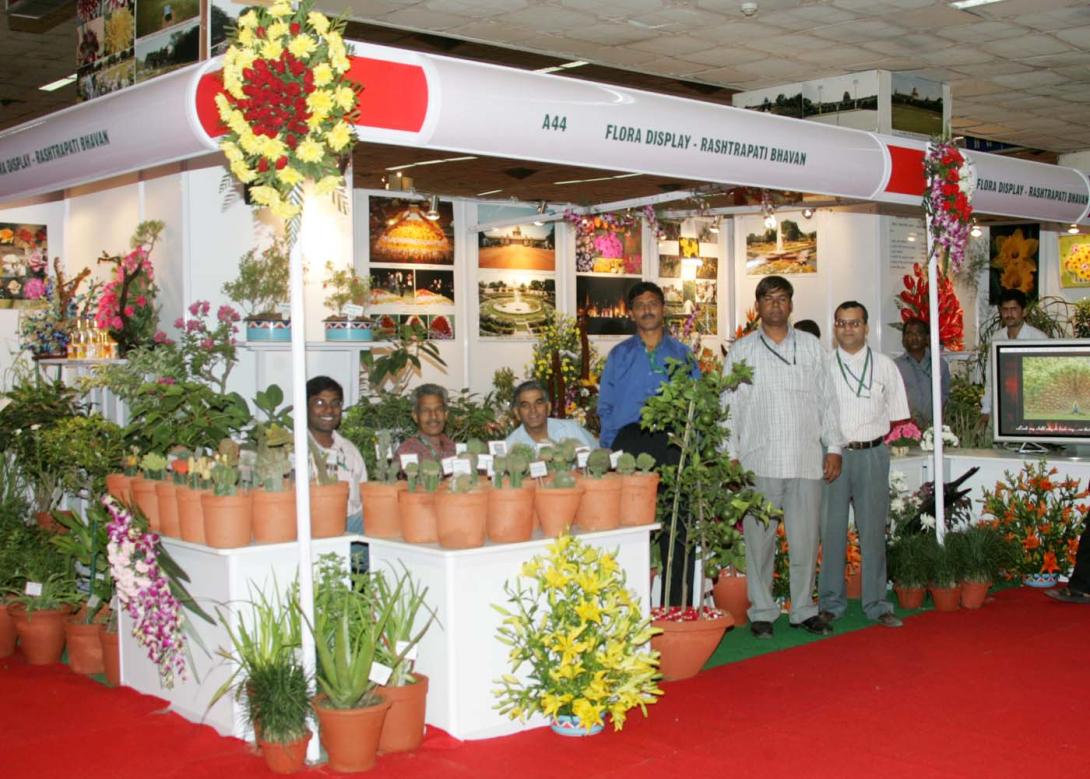Address at the Inauguration of Flora Expo Pragati Maidan, New Delhi
Pragati Maidan, New Delhi : 08-09-2006
National Mission: Floriculture 2010
Flower blossoms
Minds become beautiful
I am delighted to participate in the Inauguration of Second International Flora Expo 2006 organized by Indian Flowers and Ornamental Plants Association. I extend my greetings to the organizers, farmers, exporters, scientists, international buyers and distinguished guests. I visited Hall No. 10 & 11 just now, which is full of flowers. I have seen the beautiful flowers and they are indeed feast to the eyes. The topic for my discussion is "National Mission: Floriculture 2010".
Rashtrapati Bhavan Experience in floriculture
During my stay for the last four years in Rashtrapati Bhavan, I have been living amongst flowers from early morning till late evening. Whichever direction we go, flowers greet us. There are beautiful flowers which adore and beautify the Mughal Gardens through their appearance, brightness, pleasing colors and fragrance. There are some varieties of jasmine which blossom with fragrance in the morning and others blossom with fragrance in the evening. But there are many varieties of roses which blossom in February and March without fragrance but with an unparalleled beauty. The beauty and the variety of flowers in Mughal Garden adorn my website in "My Garden Smiles" feature. On many occasions the flower made me to write verses such as:
We have honey to welcome our
friends
Even compared to the sunrise,
When we blossom we are more
beautiful
In Rashtrapati Bhavan, organic environment floriculture provides pollution free atmosphere and aesthetics, helps in conservation of flora and fauna. The Mughal Garden at the Rashtrapati Bhavan attracts over one million people every year.
Genetically designed flowers
The whole environment makes me understand the dynamics of the floriculture. I find, certain variety of roses, even though beautiful, do not emit any fragrance. I desire, that a unique variety of rose should emanate from India, combining flowering beauty and fragrance. Since plant genetic science is advanced, time has now come to genetically design the flowers that will have unique shape, petal size, pleasing colours with longer shelf-life and of course pleasing fragrance. A rose that will be equally attractive to the humans and the bees.
For carrying out such challenging experiments both with flowers and other biodiverse creations of nature, I have earmarked about five acres of land in Rashtrapati Bhavan. I invite five floriculturists either from Government or private who would like to scientifically explore the creation of new varieties of flowers which give both beauty and fragrance. This will give a message of uniqueness and give Indian flavour to the whole world.
I understand that Indian roses are much sought after in the western and eastern world. The world?s best Internet based auction site is operated from Bangalore. During Valentines Day, it is common to see aircraft loads of roses being shipped from places like Bangalore. If only we could succeed in making the roses both beautiful and fragrant and long lasting, we will have a significant share in the world market.
Market for Flowers
Recently, I participated in the Centenary Celebrations of State Bank of India, Bank of India and Indian Bank. All these three banks are supporting self-help groups in a big way. The floriculture is ideally suited for conduct of business by self-help groups with the assistance of banks. Agricultural and Processed Food Products Export Development Authority, (APEDA) can provide necessary assistance in marketing the products in the right time. This will enable the farmers to get higher incomes than what they get per hectare while cultivating conventional crops.
SAC - Committee on Floriculture
When I was the Chairman of the Scientific Advisory Committee (SAC) to the Cabinet, a Committee was constituted under the leadership of Smt Lila Poonawala of Pune for studying and preparing a report on "Floriculture, Current Status, Vision and Action Plan" for submission to the Government. The Committee report was submitted in March 2001. The Committee made recommendations on 11 key issues. I would like to highlight 6 important recommendations, since the Minister of Agriculture and the Minister of State for Commerce and Industry are together participating in this exposition and together with floriculture they can visualize a Vision for Floriculture 2010:
a. Infrastructure development including roads for floriculture units, provision of uninterrupted electricity, water, cold storage facilities at air port and training of Customs officials for faster and careful clearance. Some progress has been made in this area.
b. Reduction of Interest on term loans, recognition of long gestation period for return on investment and training to bankers in floriculture technology innovations.
c. Development of suitable types and materials for poly houses, development of indigenous bio-pesticides and fungicides and development of orchids and other ornamental plants through biotechnology interventions. Development of better and high yielding varieties of flowers and ornamental plants for domestic market and studies on role of ornamental plants in containing pollution.
d. Establishing the status of floriculture in relation to agriculture and industry.
e. Training on good agricultural practices to present floriculturists and development of Internet portals on floriculture for grower to buyer, domestic and export.
f. Varieties play an important role in the success of floriculture. They are required to be changed periodically for fetching higher prices. Closely linked to the problem of varieties is the problem of royalties. Indian researchers should work with the farmers for developing newer varieties which are suitable for Indian conditions for offering large variety in the international markets.
The government and the industry had taken on many of the above suggestions. Many more are still waiting to become missions and form part of a national vision.
National vision for Floriculture
Floriculture indeed needs a national vision promoted by the Ministry of Agriculture and the Ministry of Commerce and Industry, so that we can attain a target of one billion dollar floriculture export by 2010. One day, I would like to see India becoming a major market for flower auction. While our Vision of promoting the export variety of flowers, it is essential to recognize India has the largest demand within the country having 300 million middle class people who love flowers residing in over 75 million households. In many parts of India women love flowers and they wear flowers and offer to God on auspicious occasions. I believe we have to develop a flower business within the country which may at times exceed the export demand. We should develop floriculture keeping both the domestic and international markets in mind.
Uniqueness of Indian Floriculture
India is famous for its essence (itr) which is the product of floriculture. Perfumery industry is taking advantage of the natural fragrance of Indian floriculture. Some of the unique fragrances are jasmine, geranium, damask rose. Indian researchers can mount a mission of developing floriculture products with unique fragrance which could become a value added products for sale in the international market. Also, the product may be such that after its presentation value is over the residual elements can be used for converting as a perfume. This may provide value addition to the floriculture waste, making the Indian product more competitive in the international market.
Another special feature of Indian floriculture is, in places like Kerala Hills, Tamil Nadu and Himalayas certain flowers bloom only once in twelve years. For example, the Neelakurinchi flowers (Strobilanthes Kunthiana) have carpeted the entire hill side, turning parts of the hills reddish blue in Munnar area. It has happened in this month. Similar phenomena took place in Kodaikanal, Tamil Nadu in April this year. In certain regions of Himalayas also certain flowers are reported to be blooming once in few years. Floriculture researchers may study the genetic properties of such flowers and examine whether this type of phenomena of blossoming can be evolved using the seeds from these plants in different regions. This may have an attraction to the tourists during the blooming period. Every year, we see the Saffron flower blossoming in J&K valley which is an annual phenomenon. This can be a tourist attraction.
Suggestions for promoting floriculture
I have the following suggestions for consideration of the Ministry of Agriculture, the Ministry of Commerce and Industry and also floriculturists for enhancing floriculture.
1. Fixing an annual target of one billion dollars (Rs. 5000 Cr.) of floriculture export to be accomplished by the year 2010. This will be in addition to the production for domestic market.
2. Generating quality standards and quality manuals through the involvement of research and academic institutions and the Bureau of Indian Standards.
3. Creating a mechanism of green channel for floriculture products to move within the country without hassle by Central and State agency offices.
4. Indian Research Institutions should be entrusted with the task of developing pesticides and fungicide indigenously or through partnerships with advanced institutions / industries abroad.
5. Mounting research programmes for developing indigenous floriculture products which can meet the international standards and nominating agencies for producing quality planting materials which will have enhanced shelf-life. The researchers must also address the problem of organic farming.
6. Floriculture may be encouraged in many States in India. Farmers could be encouraged to establish Special Floriculture Zones (SFZ) with incentives and technology support.
7. Bringing the whole floriculture business under insurance cover from production to reaching the market. Also the government may consider provision of subsidy for insurance.
8. Creating an inter-ministry coordinating mechanism for streamlining export of the floriculture products .
9. Our embassy abroad should make it a habit of using floriculture from India as far as possible to develop a brand for it.
10. Creating awareness among the stakeholders that floriculture is a national wealth generator and its free movement should be given high priority.
Conclusion
Floriculture has many new innovations waiting to be unearthed at least in India. It is one of the areas where the scientific challenges and the possible economic returns look very bright. I am very happy to see such an important gathering of floriculturists, bringing together all their experiences and wisdom to chalk-out the future of floriculture. Just like the flowers are knitted together to make a garland and become even more beautiful, the floriculturists must network together to make a unified mission.
I am very happy to inaugurate the Flora Expo-2006 and my best wishes to all the participants? success in all their ventures.
May God Bless You.

